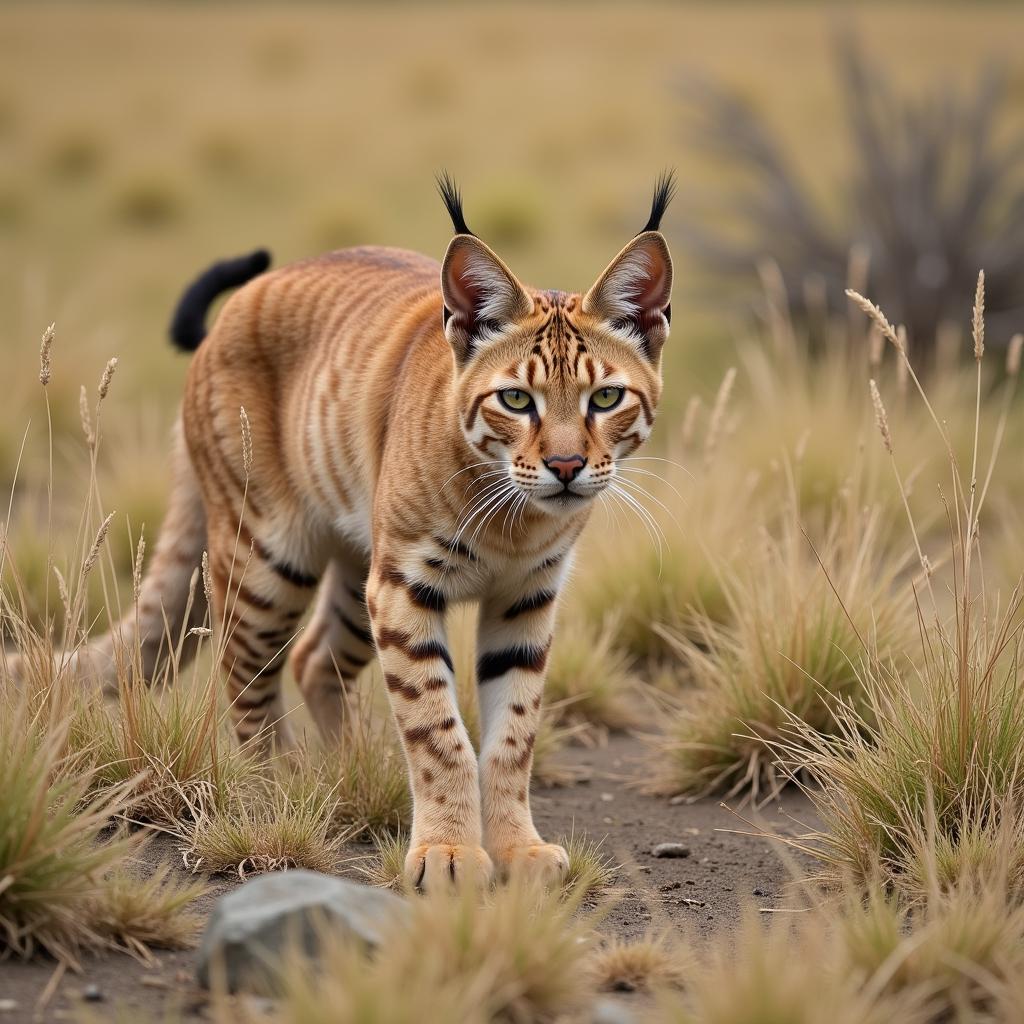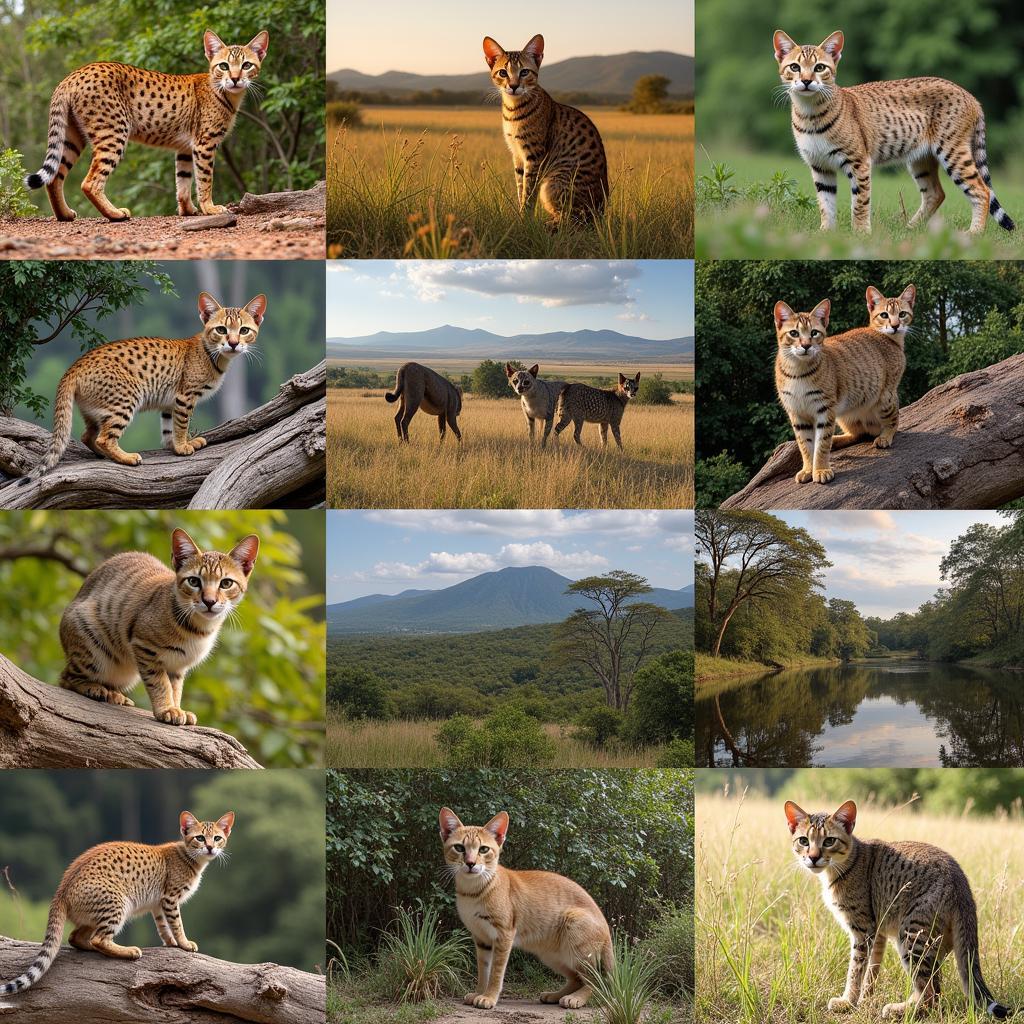Unveiling the African Forest Cat: Felis Silvestris Lybica
The African forest cat (Felis silvestris lybica) is a captivating creature, often overlooked in the shadow of its larger, more famous feline cousins. This subspecies of the wildcat plays a crucial role in the diverse ecosystems of Africa, and understanding its characteristics, habits, and conservation status is vital.
The Ancestry and Lineage of Felis Silvestris Lybica
The African forest cat, Felis silvestris lybica, stands as the ancestor of the domestic cat, a lineage stretching back thousands of years. Evidence suggests that domestication began in the Near East, possibly around the time of the development of agriculture. From there, these adaptable felines spread across the globe, becoming beloved companions in countless homes. While sharing a common ancestor, the African forest cat retains its wild nature, inhabiting a diverse range of habitats across Africa. This wildcat’s coat, typically a sandy brown or greyish color, provides excellent camouflage in its natural environment. Their diet consists mainly of small rodents, birds, and reptiles, playing a key role in maintaining the delicate balance of their ecosystem.
The close relationship between the African forest cat and the domestic cat has led to some interbreeding, particularly in areas near human settlements. This poses a threat to the genetic integrity of the wild subspecies, blurring the lines between wild and domestic populations. Conservation efforts are therefore focused on protecting the remaining pure populations of Felis silvestris lybica and mitigating the impact of hybridization. Learning more about these fascinating creatures contributes to a deeper appreciation for the biodiversity of Africa and the importance of preserving its unique wildlife. For those interested in learning more about domesticated African cats, you might find this article helpful: african cats domestic.
 African Forest Cat Camouflaged in Grassland
African Forest Cat Camouflaged in Grassland
Habitat and Distribution: Where Does the African Forest Cat Live?
From the savannas to the edges of forests, the African forest cat demonstrates remarkable adaptability, thriving in a variety of environments across the African continent. They are absent, however, from the dense rainforests of Central Africa and the arid Sahara Desert. This highlights their preference for environments with a mix of vegetation cover and open areas, providing both hunting grounds and shelter. Their range extends across North Africa, through parts of the Sahel, and down into sub-Saharan Africa. Within this vast territory, they occupy a diverse range of habitats, including grasslands, scrublands, and woodlands. This adaptability is a testament to their resilience and resourcefulness.
 African Forest Cat Habitat Diversity
African Forest Cat Habitat Diversity
What Does an African Forest Cat Eat?
Primarily nocturnal hunters, African forest cats rely on their keen senses and agility to capture a variety of prey. Their diet consists primarily of small mammals, such as rodents, gerbils, and shrews. They also supplement their diet with birds, reptiles, and occasionally insects. Their role as a predator is essential for maintaining the balance of the ecosystems they inhabit, helping to control populations of prey species. This balance is critical for the overall health and stability of the African wilderness. More information on the African forest cat can be found here: african forest cat.
Conservation Status and Challenges: Protecting Felis Silvestris Lybica
While not currently considered endangered, the African forest cat faces several ongoing threats. Habitat loss due to human encroachment and agricultural expansion is a significant concern. Additionally, the increasing presence of domestic cats leads to competition for resources and the risk of hybridization, which can dilute the wildcat’s gene pool. Conservation efforts focus on protecting their natural habitats and promoting responsible pet ownership to minimize the impact of domestic cats on wild populations. Understanding these challenges is crucial for ensuring the long-term survival of this fascinating species.
Conclusion: The Significance of the African Forest Cat
The African forest cat, Felis silvestris lybica, plays a vital role in the African ecosystem. Understanding its characteristics, habitat, and the challenges it faces is essential for its conservation. By appreciating the significance of this often-overlooked feline, we can contribute to preserving the rich biodiversity of Africa.
FAQ
- What is the difference between an African forest cat and a domestic cat?
- What is the average lifespan of an African forest cat?
- Are African forest cats social animals?
- What are the main threats to African forest cat populations?
- How can I contribute to African forest cat conservation?
- What is the scientific name of the African forest cat?
- Where are African forest cats found?
Other Questions?
Do you have other questions about African Wildlife? Check out our other articles on related topics.
Need help?
Contact us:
Phone: +255768904061
Email: kaka.mag@gmail.com
Address: Mbarali DC Mawindi, Kangaga, Tanzania.
We have a 24/7 customer service team.

